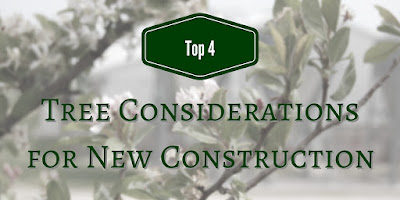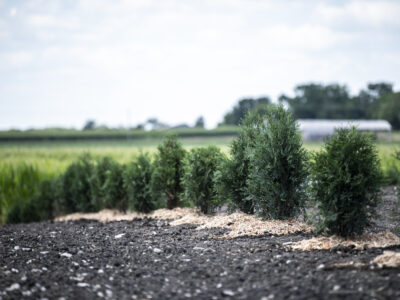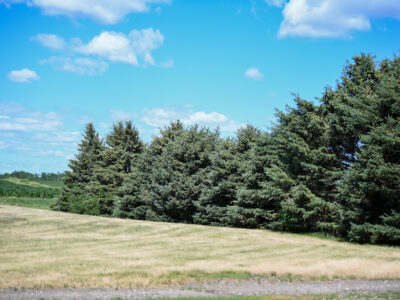1) Plan for a solid row of trees on the north and west sides.
To maximize the trees’ effectiveness controlling snow, providing a windbreak and reducing odor, plan for a solid row (or multiple rows) of trees on the north and west sides. Don’t leave any gaps – wind and snow will cause you headaches in those areas.
2) Leave enough room between the livestock barn or feedlot and the property line.
To allow for adequate air flow and to prevent snow from landing on your roof or driveway, plan to keep the closest row of tree a minimum of 70-80 feet back from the facility. If you’d like to plant more than one row of conifers, plan for even more room as these trees typically have a large footprint at maturity. Planting rows too close to each other will significantly limit the success of your windbreak.
3) Leave enough room to plant some trees along the road for visual screening.
Whether you plant a solid row of trees along the road or a handful of ornamental trees, planting trees or shrubs along the road can help improve the aesthetics of the site and provide visual screening.
4) Taking points on the Master Matrix for trees? Plan for additional room for trees.
The matrix requires at least three rows of trees and shrubs be planted, a combination both fast and slow-growing species. Depending on the species that you choose (particularly the slower growing trees), they may have a larger footprint at maturity, requiring more room. At a minimum, the landscaping should be placed on the side of the building and structures in the prevailing wind direction. However, it is recommended to plant on all sides where it is feasible.
For advice specific to your farm, contact the Coalition at 800-932-2436 or info@supportfarmers.com; or contact one of the landscapers participating in the Green Farmstead Partner program.
– Rita (Cook) Reynolds, Coalition to Support Iowa’s Farmers




